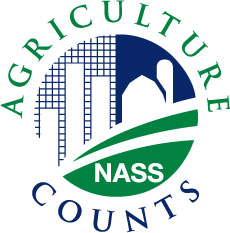Agricultural Prices
Agricultural Prices
0003-agprices-07-Backgrounder
Agricultural Prices
OMB: 0535-0003
|
Prices Received Survey |
|
United States Department of Agriculture |
National
Agricultural Statistics Service |
|
|
2007 |
|
USDA’s National Agricultural Statistics Service (NASS) conducts a monthly Prices Received Survey to estimate prices received by farmers and ranchers for crop and livestock commodities. Each month, commodity buyers are asked to report the prices producers received for the previous month and to provide a preliminary estimate on the current month’s price.
HOW ARE THE DATA COLLECTED?
The Prices Received Survey is conducted monthly for grains, oilseeds, pulse crops and major livestock. Depending upon the commodity surveyed, data may be gathered from elevators, buyers, auctions, stockyards, packing plants, processors, canneries, producers, and state boards, marketing cooperatives and grower associations. Data collection methods include:
Personal interviews – A NASS representative generally conducts an interview for the initial survey contact. Follow-up visits may occur and can be requested by the respondent.
Mail/Fax – Participants fill out and mail or fax back the questionnaire that was sent to them.
Telephone – Interviews may be conducted over the telephone.
Internet – Secure online reporting is the timeliest, most cost-effective option.
HOW IS THE INFORMATION USED?
NASS publishes a monthly Agricultural Prices report that includes data on approximately 65 commodities. In addition, NASS publishes the annual Agricultural Prices Summary in July, which includes data on some 130 commodities. All sectors of the U.S. agricultural industry – producers, buyers, suppliers, policymakers and others – rely on prices received data to make sound business decisions. For example:
The Farm Service Agency uses the market year average price derived from the Monthly Prices Received Survey when determining the counter-cyclical payments to producers.
Prices received data are a component of USDA’s Parity Index, which measures the economic well-being of producers and is useful for designing the Farm Bill’s financial safety-net programs.
Grower associations and elected representatives need prices received data to lobby for legislation that promotes and supports U.S. agriculture.
The World Trade Organization relies on price data to make decisions about international trade, including tariffs and other trade barriers.
The Extension Service and universities promote increased prosperity and economic security for producers by incorporating sound price data into marketing and financial management strategies.
Federal and state agencies use price data to project revenues and the need for public services.
Agribusinesses use income estimates derived from prices surveys to evaluate markets for location, expansion, and contraction of their business activities.
The Economic Research Service calculates the farm share of consumer expenditures using this price data.
The information provided by survey respondents is confidential by law. NASS safeguards the confidentiality of all responses and publishes only state- and national-level data, ensuring that no individual firm can be identified.
All reports are available through the NASS web site: www.nass.usda.gov. For more information on NASS surveys and reports, call the NASS Agricultural Statistics Hotline at (800) 727-9540.
| File Type | application/msword |
| Author | NortDe |
| Last Modified By | mcbrgi |
| File Modified | 2007-06-01 |
| File Created | 2007-06-01 |
© 2025 OMB.report | Privacy Policy

